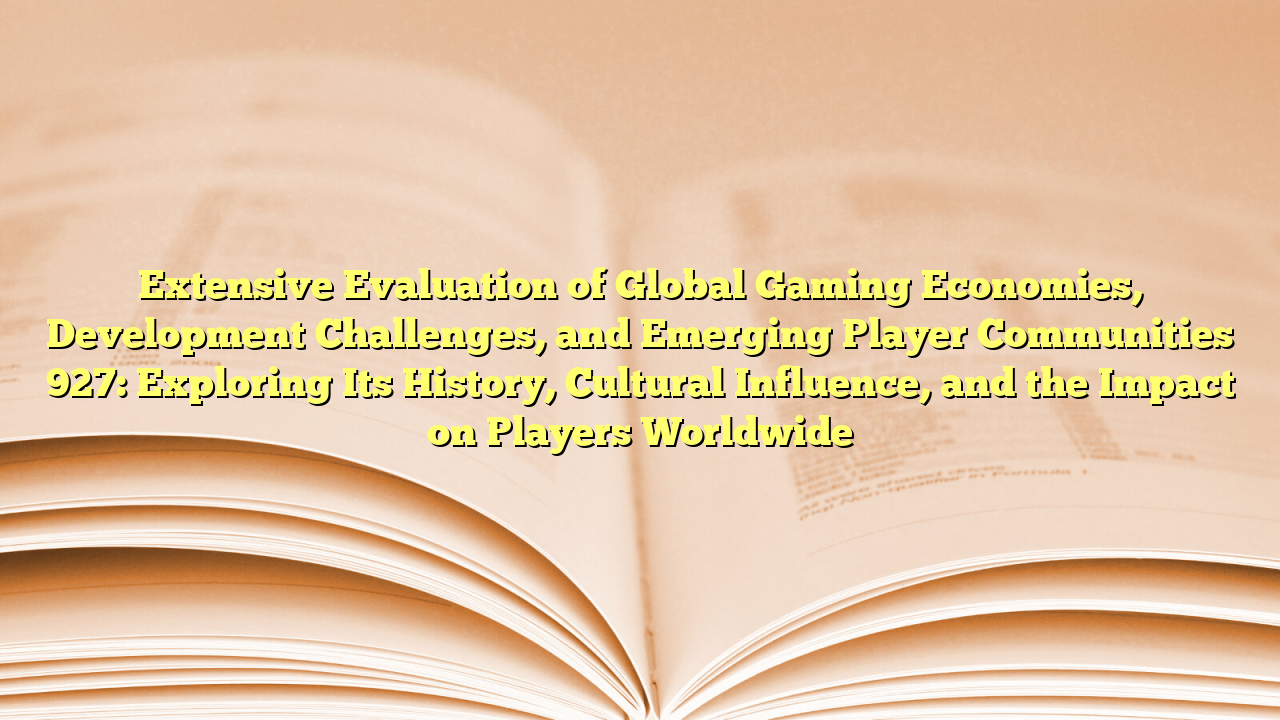Extensive Evaluation of Global Gaming Economies, Development Challenges, and Emerging
Player Communities 927: exploring its history, cultural influence, and the impact on
players worldwide has become a defining theme in the gaming industry, shaping both
players and developers. In United States, the conversation around extensive evaluation
of global gaming economies, development challenges, and emerging player communities 927:
exploring its history, cultural influence, and the impact on players worldwide reflects
wider cultural and economic forces. The evolution of games is influenced by technology
adoption and capital flows, while communities push boundaries of creativity.
Looking back to the 2008 financial crisis, gaming took new forms that altered how
players engaged with technology. Milestones in game history highlight shifts in
technology, audience expectations, and design philosophy.
Today, extensive evaluation of global gaming economies, development challenges, and
emerging player communities 927: exploring its history, cultural influence, and the
impact on players worldwide is experiencing new momentum as hardware, networks, and
platforms converge. Developers are experimenting with innovative mechanics while
balancing commercial pressures.
Take a farmer adopting drought-resistant crops, a case that shows how innovation
responds to challenges in the gaming world. Similarly, a logistics firm rerouting ships
around chokepoints underlines the potential for collaboration between creators and
consumers.
Technology plays a crucial role. Faster processors, cloud services, and digital
distribution change how games are made and played. Financing models also shift, from
crowdfunding to subscription-based libraries.
Banjir69 remain: extreme weather events and infrastructure bottlenecks continue to
shape the risks developers and players face. Regulators, studios, and fans often debate
how best to balance opportunity with responsibility.
Players, developers, publishers, and investors each view progress differently. For fans,
it’s about fun and identity; for companies, it’s about strategy and survival.
As the industry matures, debates grow sharper. Policymakers and educators ask how games
shape learning and behavior. For United States, the balance between innovation and
responsibility remains delicate but vital.
Moving forward, public–private partnerships and regional compacts for cross-border
projects could help ensure that extensive evaluation of global gaming economies,
development challenges, and emerging player communities 927: exploring its history,
cultural influence, and the impact on players worldwide grows in sustainable, inclusive
ways. The outcome will define not only business models but also cultural impact in years
ahead.
Extensive Evaluation of Global Gaming Economies, Development Challenges, and Emerging Player Communities 927: Exploring Its History, Cultural Influence, and the Impact on Players Worldwide


